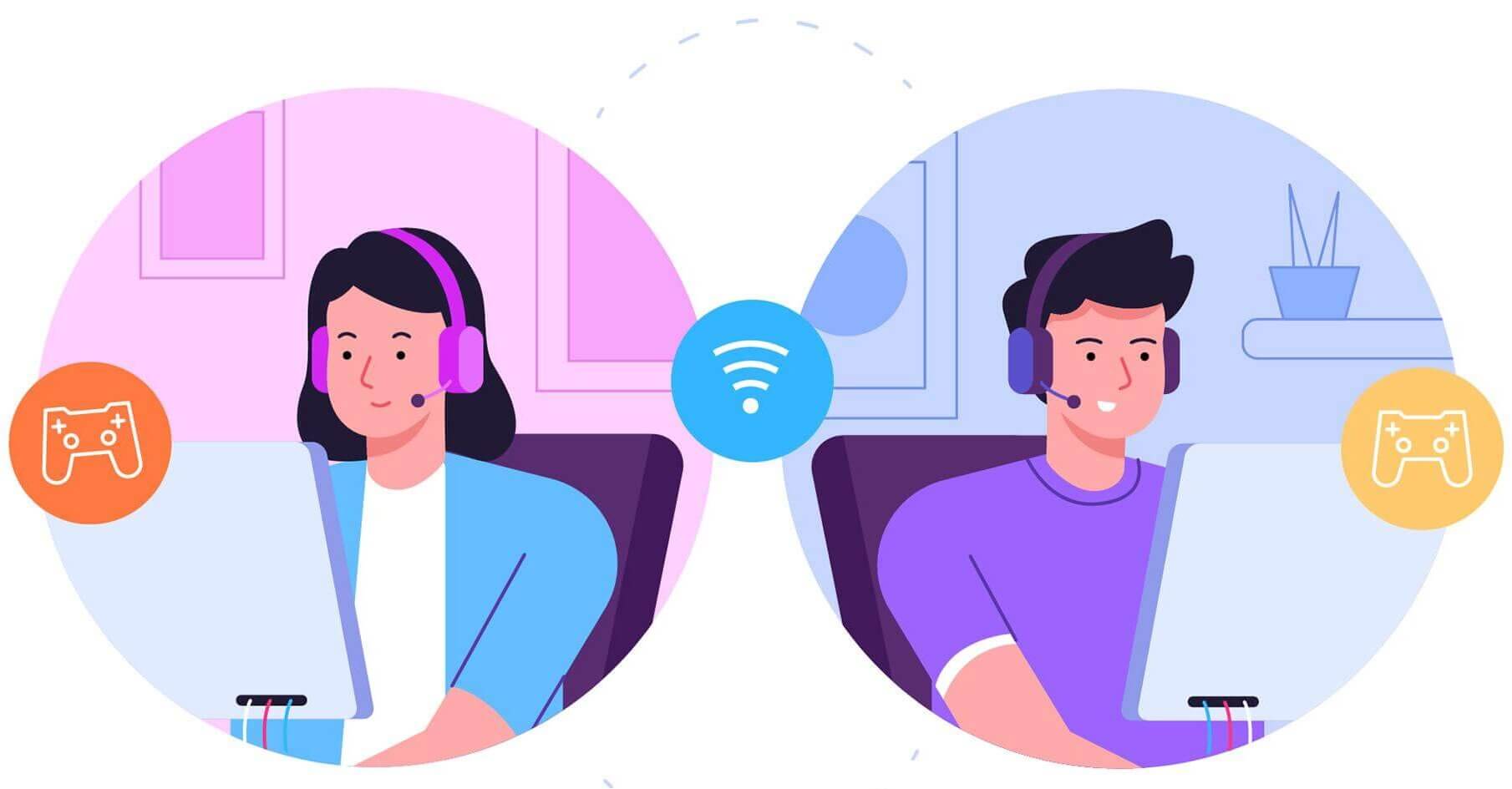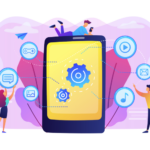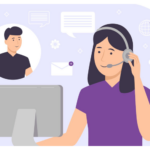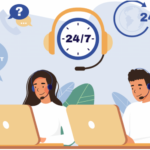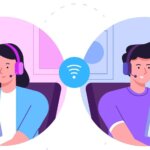Introduction
It’s easy to believe that in the realm of chatbots and emails, Outbound Calling, clients rarely prefer phoning a service. Yet, the inverse is true. Customers who want to approach or interact with a business continue to prefer phone conversations.
According to a CFI Group survey, Outbound Calling, more than 76% of all consumers prefer to approach customer service agents over phone calls. Given these data, call centers should invest in inbound and outbound call center services.
Contrary to popular opinion, outbound calls function really well! That is why some businesses, such as finance and commercial real estate, continue to thrive on it.
But, when it comes to lead generation, “inbound” appears to be the keyword these days. And with good cause. Inbound strategies might brag about their numbers.
Let’s look attentively at the distinctions between incoming and outbound call center to see if one is genuinely superior to the other.
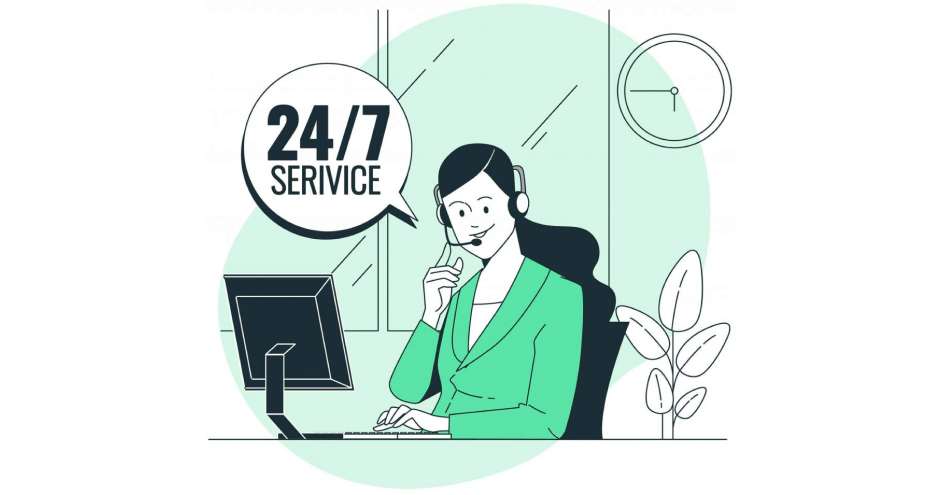
Inbound Call Center
An inbound contact center is a customer support function that handles incoming phone calls from customers.
Consumers call the inbound contact center for a variety of reasons, including placing a purchase, making a complaint, asking a question, or canceling a flight ticket, and it is the call center’s obligation to respond swiftly and offer customers a professional and knowledgeable experience.
The ability to provide a high-quality customer experience is mostly determined by the quality of employees in the incoming contact center.
For consumers, the agent is the company’s voice. In fact, agents may be the only persons with whom consumers ever engage from a firm, making the agent and their working environment a critical concern for any business. It is not sufficient to employ properly and train adequately.
Telemarketing contact centers must also guarantee that agents are professionally managed, surrounded by high-performing colleagues, operate in a well-maintained building, have a schedule that works for them, and is given the tools that engage and encourage them and enable them to offer the service experience clients demand.
Inbound contact centers frequently discover that if they take care of their employees, the agents will take better care of their clients. Inbound contact centers can use software solutions to guarantee that their agents are well-positioned for success.
Outbound Call Center
Outbound call center are businesses that make outgoing calls to clients and prospects. Telemarketing calls are made by businesses for a variety of reasons, including sales, collections, surveys, research, fundraising, and proactive customer alerts.
For whatever reason, all outbound call center prioritize clean calling lists, high connect rates, and high conversion rates. outbound call center services have grown more regulated, owing mostly to customer outrage about receiving unsolicited phone calls.
Although each state has its own set of rules, there are two major federal laws/regulations that all outbound call center must follow: the Do Not Call (DNC) Registry and the Telephone Consumer Protection Act (TCPA).
Outbound call center commonly employ Dialers, which boost efficiency and effectiveness by automating some or all of the dialing process, as well as help in remaining compliant with the aforementioned requirements.
Features of Inbound Call Center
Customer Service:
The primary focus of an inbound call center is to provide customer service to callers. Call center software is trained to handle a wide range of customer inquiries, complaints, and requests.
Multi-Channel Support:
In addition to phone calls, many inbound call centers also offer support through other communication channels such as email, chat, and social media.
Call Routing:
Calls are automatically routed to the appropriate agent or department based on the nature of the inquiry or request. This ensures that callers are quickly connected to the person who can best assist them.
Interactive Voice Response (IVR):
Many inbound call centers use ivr software to provide self-service options to callers. This can include options such as checking account balances, tracking orders, and scheduling appointments.
Real-Time Monitoring:
Inbound call centers often use software to monitor call queues, call times, and agent performance in real-time. This allows managers to quickly identify and address any issues that may arise.
Analytics and Reporting:
Data is collected and analyzed to help managers identify trends, improve processes, and optimize performance.
24/7 Availability:
Many inbound call centers operate 24/7 to provide around-the-clock support to customers. This is particularly important for businesses that operate in different time zones or have customers in different parts of the world.
Features of Outbound Call Center
Telemarketing:
Outbound call center are often used for telemarketing purposes, such as generating leads, making sales, or conducting market research.
Predictive Dialer:
Outbound call center often use predictive dialers, which automatically dial phone numbers and connect agents to live calls when someone answers.
Scripting:
Outbound Call center agents are often provided with scripts to follow when making calls to ensure consistency in messaging and compliance with regulations.
Sales Training:
Agents are often trained in sales techniques to help them effectively sell products or services over the phone.
Call Recording:
Outbound call center often record calls for quality assurance and training purposes.
Real-Time Monitoring:
Managers often use software to monitor call times and agent performance in real-time.
Analytics and Reporting:
Data is collected and analyzed to help managers identify trends, improve processes, and optimize performance.
Compliance:
The outbound call center must comply with regulations, such as the Telephone Consumer Protection Act (TCPA), which regulates telemarketing calls made to consumers in the United States.
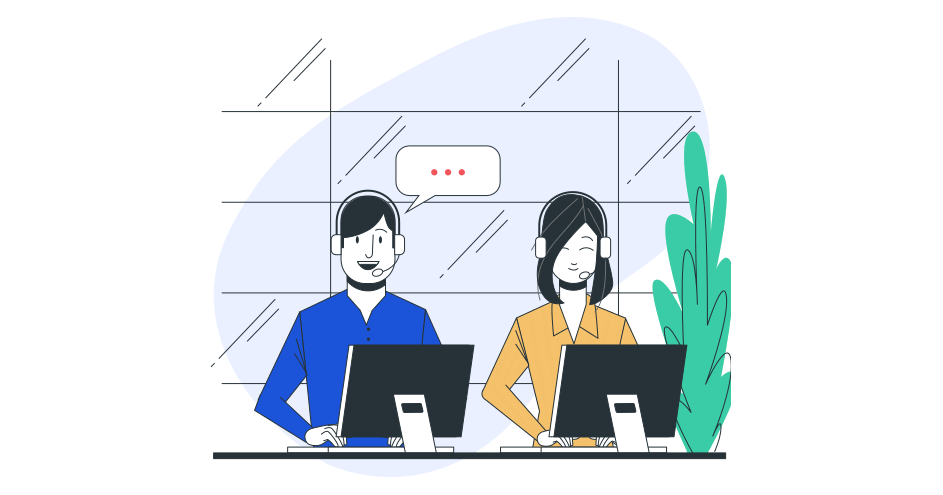
Inbound Call Center vs. Outbound Call Center
The key difference between inbound and outbound call center is the direction of the call flow and the purpose of the calls.
| Inbound Call Center | Outbound Call Center |
| Two-way communication | One-way communication |
| Likable | Intrusive |
| Search Engine Optimization (SEO) | Advertising |
| Lead nurturing | Sales pitch |
| Content strategy and blogging | Banner and display ads |
| Social media community building | Social media advertising |
| Educational content | Promotional content |
| Subscription-based email marketing | Paid email lists |
| Buyers control process | Sales-person control process |
| Customers find you | You find customers |
Epilogue
ezsip offers a variety of dialer software options to match your company’s demands, including an outbound calling and an inbound calling portal.
Both have their own key features and, cutting-edge capabilities, Outbound Calling allowing you to boost your contact center operations without stress.
At ezsip, you’ll discover all of the standard dialer functions, as well as some extras.
Would you want to learn more about ezsip dialer portal solutions? Reach us right away at ezsip.io or request a free trial.

